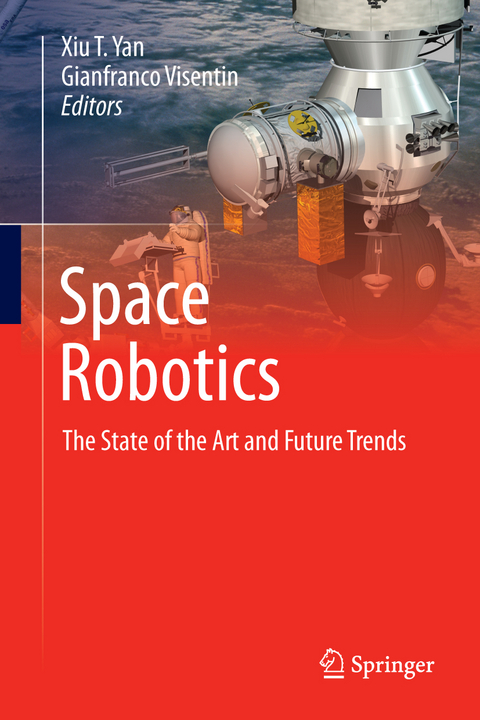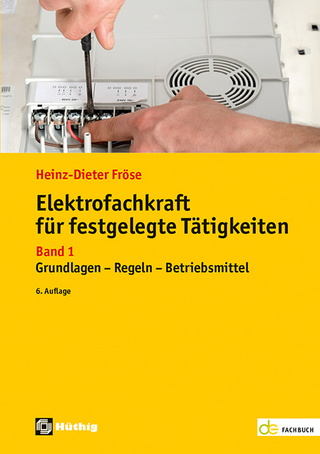
Space Robotics
Springer International Publishing (Verlag)
978-3-031-39213-9 (ISBN)
- Noch nicht erschienen - erscheint am 04.01.2025
- Versandkostenfrei innerhalb Deutschlands
- Auch auf Rechnung
- Verfügbarkeit in der Filiale vor Ort prüfen
- Artikel merken
lt;p>Xiu-Tian Yan is Professor of Mechatronic Systems Technology at the University of Strathclyde. He was Chairman of Robotics and Mechatronics TPN of the Institution of Engineering and Technology. In the course of 30 years in the field, he has developed novel research approaches to mechatronic system design, including the development and application of "mechatronic design process models", modeling and simulation of these systems, and techniques for prototyping them for validation.
His research interests include mechatronic systems design, robotics (especially in multi-perspective mechatronic system modeling), design and simulation, computer support mechatronic systems design using AI techniques, the proactive computer support of product life-cycle synthesis, system generalization and configuration design, and constraint-based insightful engineering design support. He has published over 270 journal and conference papers and has edited or co-authored five books on mechatronics, advanced design and manufacture.
Dr Gianfranco Visentin has been with the European Space Agency (ESA) for the last 25 years. Since getting started at the ESA he has been with the Automation and Robotics (A&R) group working in support of ESA robotics projects. He has participated in the development of the European Robot Arm (ERA), the Columbus Microgravity Facilities, the EUROBOT system (which he initiated) and the ExoMars project. His research and development (R&D) efforts have covered the whole spectrum of technologies needed for space A&R, including: conventional robotics platforms (rovers, robot arms), alternative robotic platforms (moles, aerobots, walking robots), robot autonomy, teleoperation and remote control (robot programming stations, exoskeletons), perception (computer vision) and robot subsystems (robot joints, controllers). He is the inventor of some original space concepts such as 3D digital camcorders (2 used on board the International Space Station), arm exoskeletons for space use, and capture of space debris by means of throw nets. In his current post Dr Visentin is responsible for the ESA's technology domain for Automation and Robotics. He is chair/co-chair of the ASTRA and iSAIRAS conferences, which are the primary forums for discussing ideas and advances in Artificial Intelligence and Robotics in space. He is currently coordinator of the European Commission (EC) funded project PERASPERA, which provides the EC with the roadmap for developments within the H2020 space robotics technology Strategic Research Cluster.
Fundamentals of Space Robotics.- Space Robotics Technologies: Perception for Autonomy.- Space Robotics Technologies: Small Dexterous Manipulators.- Locomotion Subsystem Design.- ESROCOS: Development And Validation Of A Space Robotics Framework.- Legged Systems for Exploration.- Air-Bearing Microgravity Simulators for Space Robotics.- Modular Reconfigurable Multi-robot Systems for Flexible Space Exploration.- SIROM an Enabler for Reconfigurable Space Robotics.- Coupled Path and Motion Planning for a Rover-manipulator System.- Rover Autonomy Testing in Simulation and on Breadboard Rovers.- Design and Validation of Orbital Robotic Missions.- Hybrid Testbeds with a Focus on Sensors in Space Robotics Applications.- In-Space Assembly Operations.- PULSAR: Verification of Technologies for In-Orbit Assembly of a Large Telescope.- An Overview of the Space Servicing Requirements in a Sustainable Space Age 331.- Building a Lunar Infrastructure with the Help of a Heterogeneous (Semi)Autonomous Multi-Robot-Team.- The AgriRover: A Space Robotics Inspired Mechatronic Platform Technology for Precision Farming.- Space Robotics Standard Interface: SIROM evolution.- Robotics Concepts for Future Planetary Exploration Missions.- HOTDOCK and the MOSAR Walking Manipulator, Technologies for Modular Spacecraft Assembly and Reconfiguration.
| Erscheint lt. Verlag | 4.1.2025 |
|---|---|
| Zusatzinfo | XXVIII, 544 p. 303 illus., 284 illus. in color. |
| Verlagsort | Cham |
| Sprache | englisch |
| Maße | 155 x 235 mm |
| Themenwelt | Technik ► Elektrotechnik / Energietechnik |
| Technik ► Maschinenbau | |
| Schlagworte | Autonomous Systems • Light Weight Structure • mechanisms • Navigation • Space Robotics • Space Sensing and Data Fusion |
| ISBN-10 | 3-031-39213-2 / 3031392132 |
| ISBN-13 | 978-3-031-39213-9 / 9783031392139 |
| Zustand | Neuware |
| Haben Sie eine Frage zum Produkt? |
aus dem Bereich


